REEL RETRO CINEMA: New looks at old flicks — and their comic-book roots…

—
Dig this groovy piece by Rob Kelly. And when you’re done, have a listen to his excellent new Supergirl film-commentary track episode of the Superman Movie Minute at The Fire and Water Podcast Network. You can also check out Paul Kupperberg’s companion column: MY 13 FAVORITE DARING NEW ADVENTURES OF SUPERGIRL COVERS. Rad! Click here. — Dan
—
By ROB KELLY
After the disappointing response to Superman III, Ilya and Alexander Salkind—who retained the film rights to the Man of Steel and all the ancillary characters—wanted to try something different. So they turned their attention to Superman’s cousin, Supergirl.
The Salkinds hired The Dark Crystal screenwriter David Odell to craft a story steeped in the Superman mythos—not only would this film feature a guest appearance by Christopher Reeve as the Man of Steel, but both our heroes would square off against legendary super-villain Brainiac (a character first proposed for Superman III). It was Reeve himself who suggested director Jeannot Szwarc, who had helmed Somewhere in Time, a gentle fantasy film starring Reeve and Jane Seymour.
Szwarc accepted the Salkinds’ offer to direct, but he let them know he wanted his film to move away from the propulsive, bone-snapping action of the Superman films and toward something more gentle and graceful, befitting its younger, more childlike lead. Szwarc also looked forward to working with Christopher Reeve again. Unfortunately, it was immediately after that things started to go wrong.
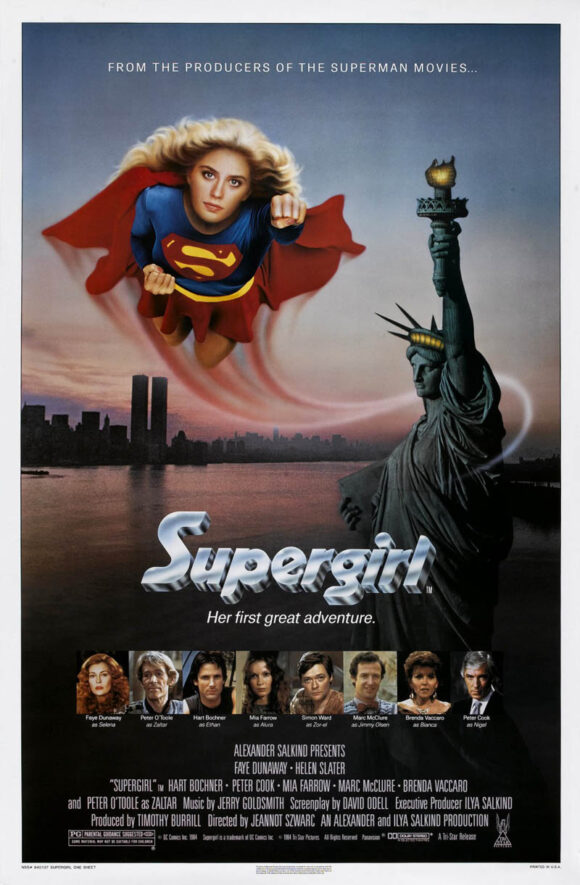
Also unhappy with how Superman III turned out and ever more mindful about being typecast, Reeve dropped out of Supergirl. To make matters worse, DC Comics, gunshy about introducing too many elements from the comics (oh, how things have changed), nixed the use of Brainiac, or any of the other Superman villains. Screenwriter Odell had to revise his script into something less ambitious and less connected to the source material. More fantasy, less science-fiction/adventure.
Despite all this, Supergirl charged forward using a lot of the same methods that had served the Salkinds so well—a number of the behind the scenes special effects crew from the Superman films were retained, and a truly all-star cast was assembled to surround a young, unknown actor in the lead role. Faye Dunaway was picked to play the villainous witch Selena, backed up by Peter Cook and Brenda Vaccaro (in a role originally written for Dolly Parton!), Mia Farrow was cast as Kara’s mother, and the legendary Peter O’Toole was hired for Zaltar, who serves as our hero’s mentor. After originally considering Brooke Shields, the Salkinds hired Helen Slater, making her big-screen debut. The one direct connection to the earlier films came in the form of Marc McClure, reprising his role as Jimmy Olsen.
Supergirl opens in Argo City, a small “suburb” of Krypton, which survived that planet going kerblooey by being transported into a pocket dimension. A device known as the Omegahedron, which Zaltar has borrowed without the authorities knowing, powers the entire city. A careless accident sends the glowing orb into space, meaning the city will eventually lose all power and collapse. Like her cousin before her, Kara is sent in a spaceship to Earth to retrieve it.
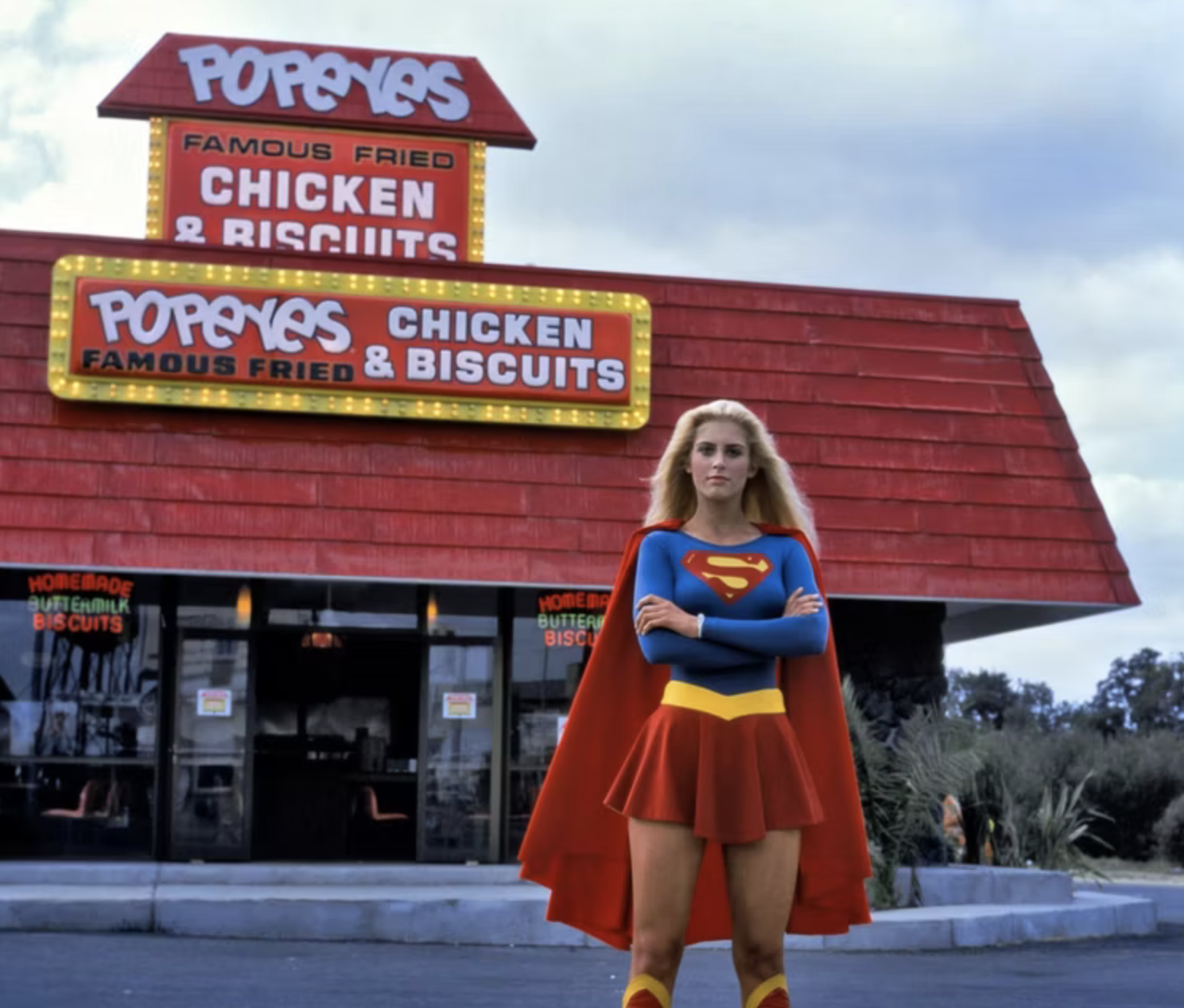
Kara is sent in a spaceship to Earth to retrieve the Omegahedron — and tuck into some product-placement Popeyes chicken!
The Omegahedron almost literally falls into the lap of the power hungry Selena, who does not fully understand what it is, only concerned with its ability to help her rule the world. Kara, now gifted with the same powers as her cousin, dons the Supergirl costume as well as the civilian identity of Linda Lee. As Lee, she enrolls in an all-girls school where her roommate is—what luck!—Lucy Lane, younger sister of Lois.
Supergirl and Selena engage in multiple battles over the Omegahedron, as well as the affections of a local handyman named Ethan (Hart Bochner), whom Selena lusts after but who only has eyes for Supergirl. Selena uses her magic powers to send Supergirl to the Phantom Zone, where Zaltar has exiled himself. Powerless in the Phantom Zone, Kara is almost killed but is saved by Zaltar, who dies helping Kara escape. Back on Earth as Supergirl, Kara defeats Selena once and for all, and then returns the Omegahedron to Argo City.
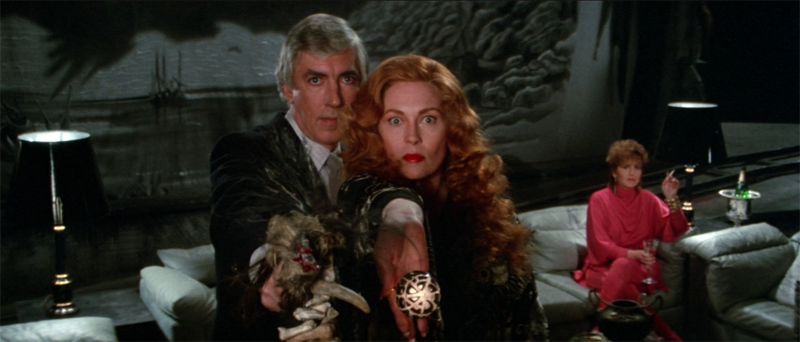
Despite the initial creative upheavals, Supergirl was a relatively untroubled shoot. Slater was a lot less prickly a performer than Reeve, and Jeannot Szwarc handled the massive production with relative ease. Unfortunately, this helped mask the issues facing the film that never got resolved.
Like Szwarc’s next film for the Salkinds, Santa Claus: The Movie (which we covered for Reel Retro Cinema last year), Supergirl is so good hearted that it feels churlish to be too critical of it. Helen Slater in the title role is wonderful, bright eyed and innocent, yet believable as someone capable of handling such immense power in the cause of good. As Szwarc intended, her flying scenes as Supergirl have a grace and almost balletic quality that fits the character, and is a nice change of pace from what we saw in the first three Superman films.
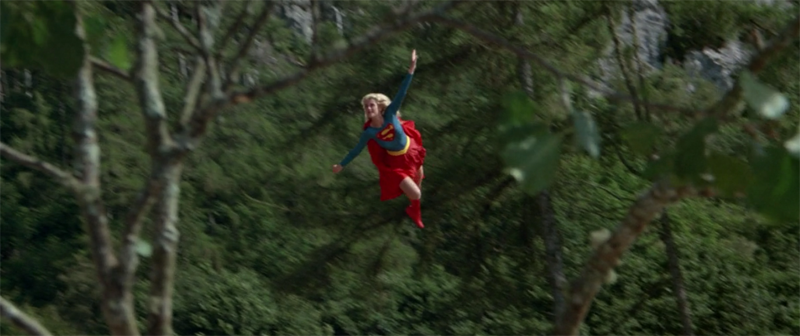
Despite the beating heart at the center of Supergirl, though, everything else around that heart is a bit of a mess. Faye Dunaway’s Selena is so cartoony and grand that she’s a better fit for Batman ’66. Supergirl’s race against the clock to find the Omegahedron (“Um, are the lights around her getting dimmer?”—The citizens of Argo) is undercut by her wasting valuable time going to school as Linda Lee and hanging out with Lucy and Jimmy. Hart Bochner, so wonderfully sleazy a few years later in Die Hard, is a bit of a stiff here, so the idea that he would be fought over by Supergirl and Selena is pretty absurd.
Most critically flawed is the film’s central conceit—Supergirl’s whole journey is to save Argo City. Which wouldn’t have needed saving is Zaltar hadn’t been such an idiot. The Omegahedron is presented as if it’s the DC equivalent of the Cosmic Cube, yet Zaltar tosses it around like it’s Happy Fun Ball. Sure, Kara’s mission to save her home is a noble one, but it’s to fix a problem that shouldn’t have been created in the first place. Selena’s plan on world domination is laughable (she can’t even get her two sidekicks to do what she tells them to do), so you never get a sense of anything really at stake—unlike, say, half of California plunging into the ocean.
The best scene in Supergirl is when she visits the Phantom Zone. Never actually depicted in the Superman films, here we see it’s an unforgiving, slightly surrealist wasteland; you can understand why Zod, Non, and Ursa screamed bloody murder when they got sentenced to it in Superman: The Movie. In his director’s audio commentary, Szwarc states that the original intention was to shoot the entire Phantom Zone sequence in black and white, which would have been a really interesting visual touch. Too bad that idea was abandoned.
Like the loss of Christopher Reeve as Superman (who is explained away as being on a mission in deep space) and Brainiac, the deepest cuts to Supergirl took place outside of the actual production. Warner Bros., unhappy with Superman III and unsure of Supergirl’s box office prospects, offered the Salkinds a summer 1984 release date. Afraid the film would get lost amid the competition, they argued for a Fall/Winter release, causing Warner Bros. to pass on the film entirely. In an age where movie studios control every aspect of their IP with an iron fist, it seems inconceivable they would let a film, any film, related to Superman go to another studio, but they did. Supergirl was picked up by Tri-Star, who saw the two-hour running time and, without Szwarc’s involvement, cut about a half hour out, leaving the final film choppy and without vital bits of character development. Released Nov. 21, 1984, Supergirl crashed to Earth, not even making half of its budget back.
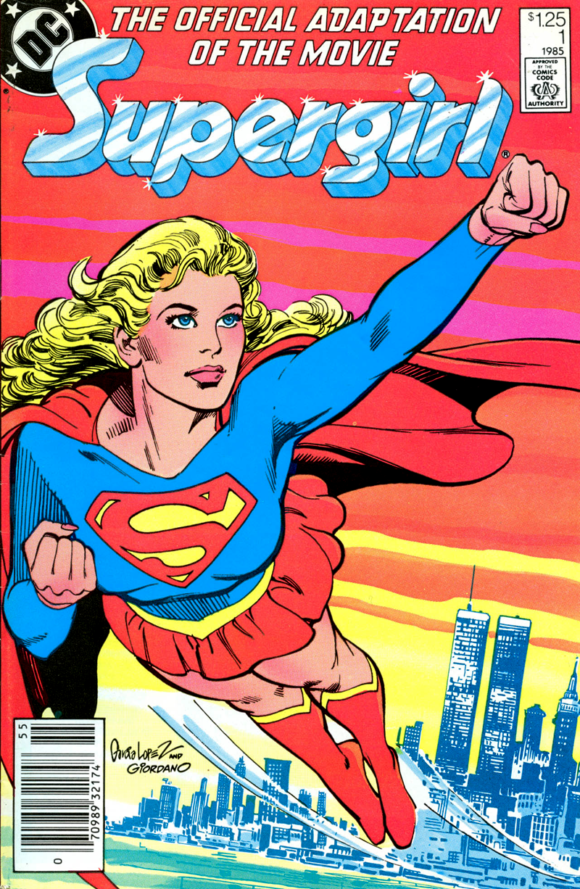
Free from the onerous stipulations of Mario Puzo’s Superman: The Movie contract, DC was free to produce a comic book adaptation of Supergirl. Written by Joey Cavalieri and drawn by the incomparable Gray Morrow, Supergirl Movie Special was published in February 1985, long after the film had come and gone from theaters. Morrow, superb at likenesses, was always a good choice for licensed material like this. Supergirl has tons of comic-book superhero action, but featuring the faces of those we saw (or, for most people, didn’t see) in the film.
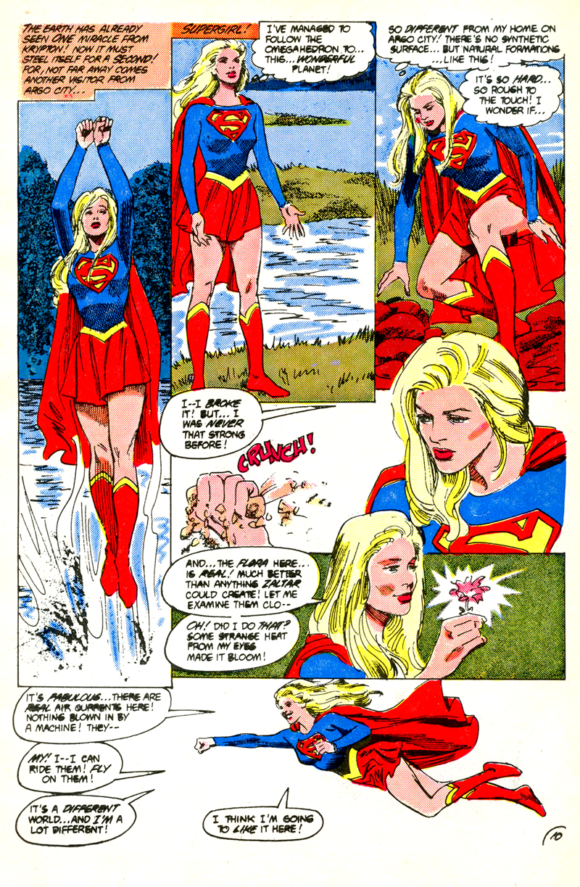
Additionally, Morrow did his own coloring, adding some wonderfully moody tones and lighting effects to Supergirl’s battles with Selena and her incarceration in the Phantom Zone. Throw in an excellent cover by Jose Luis Garcia-Lopez (is there any other kind?), and the comic isn’t half bad. Supergirl was not assisted with any sort of merchandising push—no action figures, games, or coloring books—so this comic was one of the only tie-ins the movie ever got.
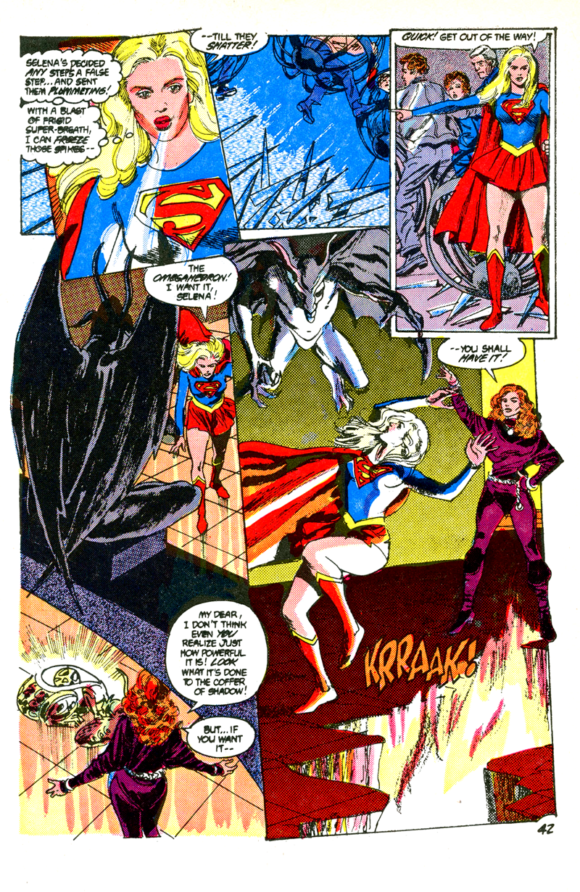
There was a lot of fallout to Supergirl’s poor performance. Helen Slater’s film career continued for a little while, but she never got the boost Christopher Reeve did. Luckily, enough time passed for her to become a beloved icon to Superman fans, and she later appeared in both Smallville and the Supergirl TV series. The Salkinds were so unhappy with the returns on Supergirl that they sold the Superman rights to schlockmeisters Golan-Globus, who would put the final nail in Superman’s cinematic coffin just a few years later.
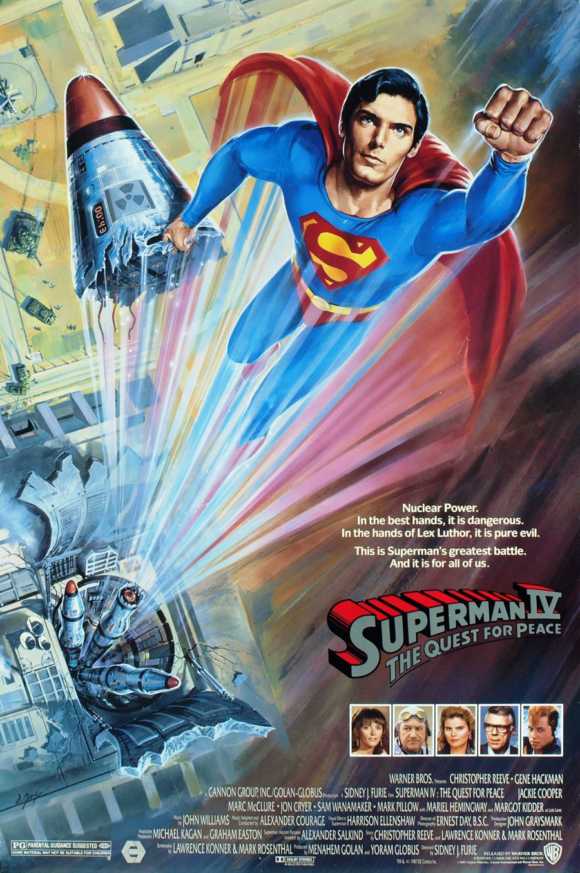
For fans of Supergirl, however, some good news can be found—Szwarc’s cut of the film is widely available now on Blu-ray and streaming. With the benefit of hindsight, while Supergirl remains a deeply flawed movie, the parts that were good then—Slater’s performance, the flying effects, the Phantom Zone sequence—are still good now.
Thankfully, with the recent news that WB is working on a new Supergirl movie, coming on the heels of a massively successful TV show, the Maid of Might’s star is brighter than ever. And she doesn’t even need the Omegahedron!
—
MORE
— PAUL KUPPERBERG: My 13 Favorite DARING NEW ADVENTURES OF SUPERGIRL Covers. Click here.
— SUPERMAN IV: You’ll Believe a Fan Can Cry. Click here.
—
Rob Kelly is a podcaster and pop-culture historian. He is the host/co-host of several shows on The Fire and Water Podcast Network, including Superman Movie Minute, Fade Out, TreasuryCast, For All Mankind and Pod Dylan.

February 5, 2023
I’ve seen the 1984 “Supergirl” movie a few times, and while I acknowledge its flaws, I don’t really hate it.
February 5, 2023
There actually was a smattering of Supergirl merchandise. I owned most of it. First was a coloring book, which had a cover patterned after the DC annuals of old (Supergirl in the center, boxes on the sides with various characters). There was an accompanying “activity book of fun”. Next was The Supergirl Storybook. Remember the old days, when kid-friendly films had hardcover children’s book adaptations, complete with lots of photos? There was one for the Girl of Steel. Finally, Nabisco released Super Heroes cookies (basically animal crackers with DC hero shapes). The first series was just DC in general but the second series spotlighted Supergirl (the comic version), with the Maid of Might front and center with her logo beneath her. On the back were “trading cards” that were just scenes from the movie to cut out.
Not quite merchandise but certainly worth mentioning was an issue of The Electric Company magazine that proclaimed “Meet Supergirl!” with Helen Slater in costume filling the cover. The issue had the actress talking about the regimen she underwent to get a super physique, complete with pictures.
February 5, 2023
You know, those flying effects were actually not bad.
March 9, 2023
I really enjoyed Supergirl. Faye Dunaway was the best thing about it for me. She was still so beautiful at this point
June 3, 2025
Still holding out hope for 4K release of this that is uncut with 2 hours or more. She seemed really good as Supergirl along with the other identity instead of just wearing glasses. Just seen it a few times on cable have DVR of that along with Santa’s Slay with some others not easy to get on Blu Ray. It would flow better if not for taking out as much its like really forgot Mia Farrow or so was in film at all. They seemed to try to appeal more to males who teens or tweens having the girls school parts in locker room or dorms. There some funny or dated comedy like the RA or what term drinking heavily.
Better than some of the Superman movies really hope for a release with how film should have been. Villains were a bit comical or tough to really take serious. Smoking is about the most evil thing they did. Kept hoping for No Wire Hangers part. There a certain purity that can see it from Dark Crystal a movie always liked. Though magic in that was a lot scarier realistic. The Orb was too much like Heavy Metal or Red Sonja having it be so powerful. I believe it manipulated events to escape Argo as even shows them in Phantom Zone all these times it helps Salina who has no idea what doing or how to wield power.
So think its what film was really about after having to remove the Super Hero aspects for Super Natural. Totally confused how it all works or able to return to city even having comic book background. So really sorta lack satisfaction way concludes seemed to have empty cages or other mishaps. That said actually like or enjoy more than any of the new DC or Marvel movies. Actually excited that Phantom getting 4K release as think its really good comic book movie around genre of like Mummy Trilogy or Jones or like that classic time period can believe its real. Reminds me of many of the stop motion Action Ray Harryhausen films Sinbad to Jason to Clash among others. Just wish these movies had better aspect ratios. You can watch this film with anybody without having to explain this or that or omit seeing scenes that might haunt etc.
August 15, 2025
Would be nice to see the Supergirl Movie Special as a facsimile. Get past that awful Flexograph printing.